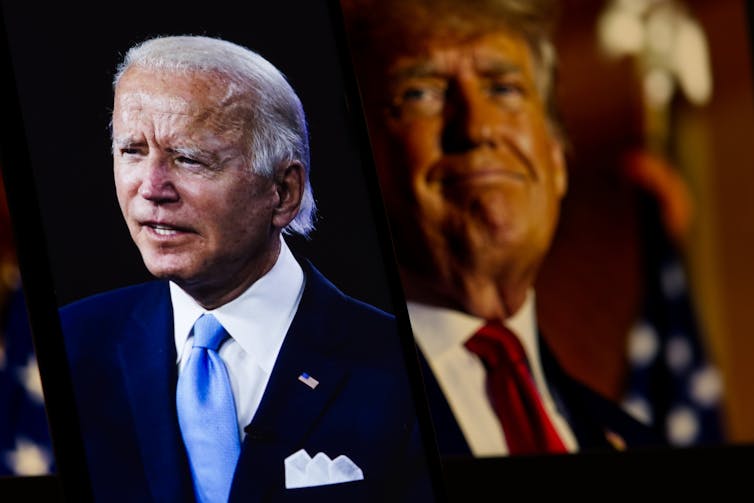Have a quick think back to the last time you scrolled through social media. Maybe it was this morning, last night or a few minutes ago. What do you recall? One thing you’re bound to remember is the continuous stream of influencers showing off their latest content.
These could be videos of influencers discussing the latest skin-care products, the trendiest places to eat, their latest shopping haul or the PR packages they received from various brands.
Much of social media influencing is about getting consumers to buy more products. However, there is a contrasting group of influencers who use their online presence to advocate for changing how people buy and consume.
In our recently published research, we looked into this sub-category of influencers to understand how they use social media to campaign for leading a more sustainable, healthy and ethical lifestyle.
Who are the ethical influencers?
We refer to them as ethical influencers. They include those whose content is dedicated to educating their online audiences about the impact of day-to-day consumption habits on the environment. This can take the form of vegan influencers asking audiences to avoid using animals in eating, clothing or entertainment.
They can also be sustainability influencers asking audiences to reduce their consumption, minimize waste, recycle, buy less and reuse more. In general, they are advocating new ways of living and consuming.
Unlike other lifestyle influencers, ethical influencers face two unique challenges that make it harder for them to build their online profiles.
First, they have to provide a closeup of their everyday life to demonstrate the new lifestyle to their audience. This is different from other influencers who might avoid sharing their personal life and play out a well-curated public persona that can greatly contrast their private life.
Ethical influencers strive to be as personal and authentic as possible by sharing their everyday life, practices and struggles.
Providing that kind of close look at their own lives can sometimes put them at greater risk of scrutiny since online audiences constantly evaluate and interact with their content.
Second, ethical influencers aim to reach out to a diverse audience, some of whom are not necessarily interested in the new lifestyle. Because ethical influencers are fundamentally trying to promote certain lifestyle choices and habits, they need to connect with a wide range of people to convince them to alter their beliefs and behaviour.
This distinction puts them counter to social media algorithms and the norms of para-social relations that favour connections based on similar interests or lifestyles.
Given these challenges, how are ethical influencers navigating their muddy terrain?
Connecting with their online audience
We found that ethical influencers use five strategies: acting, humanizing, framing, pivoting and evangelizing. For those thinking of building a similar online profile, these strategies will help in gathering audience.
Acting is showing step-by-step the expertise and commitment of ethical influencers when it comes to the new consumption practices.
For example, Lauren Singer, an enviromental influencer, posts regularly on her expertise on ways to reduce waste. Singer is most famous for fitting all the waste she produced in two years in a 16-ounce Mason jar. Acting helps ethical influencers establish legitimacy with their audience.
Humanizing is shown through sharing personal stories that might not be directly linked to green consumption. Here, ethical influencers may talk about the latest work gathering, the new addition of a family member or the new hiking trail with their pet. Humanizing aids in fostering some sort of para-social relation with the audience. It shows them as human beings, not just change agents.
Framing spotlights the unwanted consumption practices. For example, ethical influencers talk about the dangers of using detergents packed in plastic containers as they deplete the Earth’s resources. Other posts include ethical influencers discussing the animal abuse in the production of cosmetics. Framing helps their audience delineate the desired versus the undesired practices in their everyday life.
Pivoting is about linking audiences with ethical businesses so they can better navigate the market with its myriad choices. This isn’t so much about brand advertising, nor monetized collaboration, but rather reviews about ethical product performance. Pivoting helps audiences find substitutes to their daily products that are in line with living the new, more sustainable lifestyle.
Finally, evangelizing fuels a sense of community among members. Changing our behaviour and habits can be a daunting journey. Fostering a sense of belonging aids members in their quest and shields them from falling back into their old habits. These strategies, combined together, allow ethical influencers to achieve their ultimate goals.
While ethical influencers are not new, they are increasing both in terms of the number of accounts and in their popularity. They are striving to connect to, engage and educate audiences on living differently and having a positive impact on the planet. Their efforts make them a valuable resource when it comes to championing sustainability, ethical consumption and tackling climate change.




